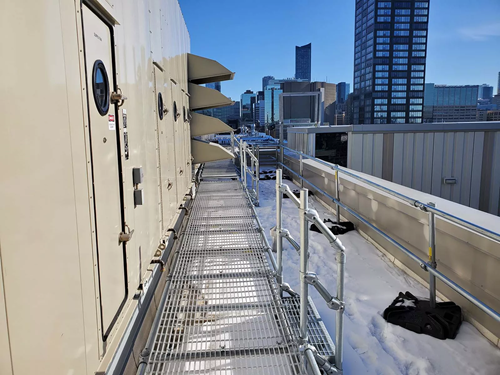 Thursday, May 2, 2024
Thursday, May 2, 2024  Thursday, May 2, 2024
Thursday, May 2, 2024 
Before anyone jokes about Canadian winters, remember that winter means many wonderful things: beautiful landscapes, skiing, hockey on a frozen pond, snowboarding, and a joyous holiday season. People also burn more calories during the winter, sleep better, and have a respite from summer heat and health problems.
The need for regular maintenance and repair of equipment on the rooftop does not take a winter break, though. In fact, snow and ice may require more attention to HVAC systems, solar panels, and other rooftop equipment. Winter conditions also present greater challenges to workers for roof fall protection. Fortunately, there are several steps employers can take to help ensure the safety of their employees working at height before Old Man Winter arrives.
Snow and ice are hazardous on the ground, so consider the dangers that these elements of nature present on a rooftop. And high winds with swirling snow and poor visibility can cause workers to misjudge the distance to the roof edge.
For flat and low-slope roofs, perimeter roof guardrails provide workers with fall protection. A modular, counterbalanced system does not penetrate the roof membrane and has the flexibility to conform to the roof configuration. The railings should be constructed of aluminum or galvanized steel for strength, durability, and corrosion resistance. If roof access is via a ladder, a self-closing gate that integrates into the guardrail system offers added safety.
Keep reading this article on KeeSafety.ca